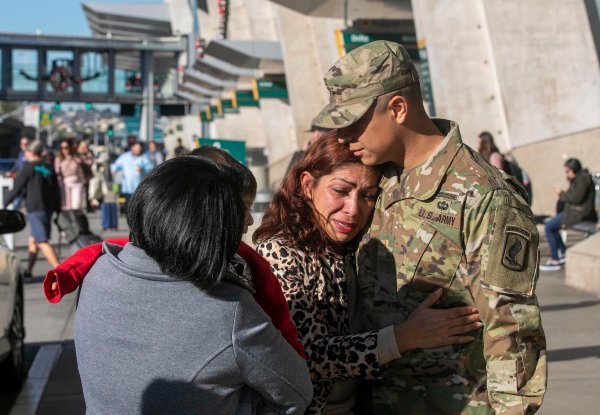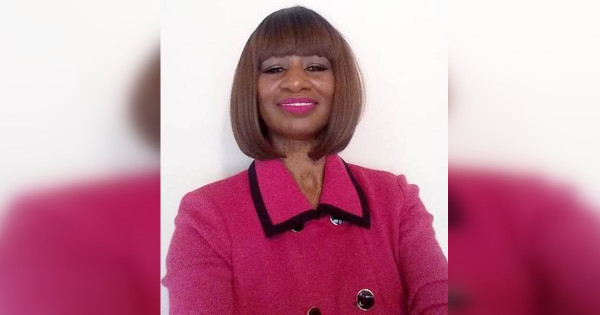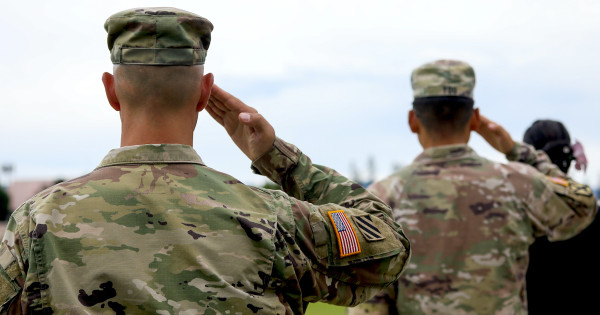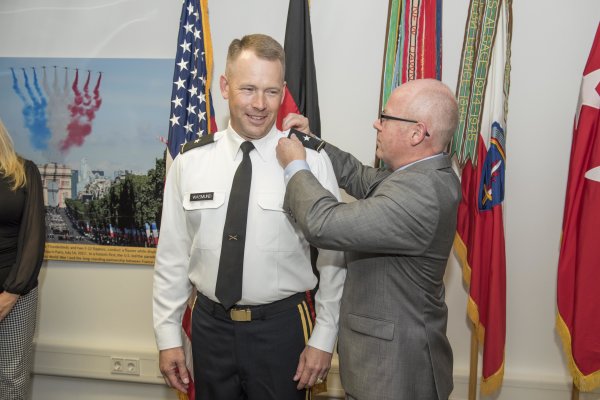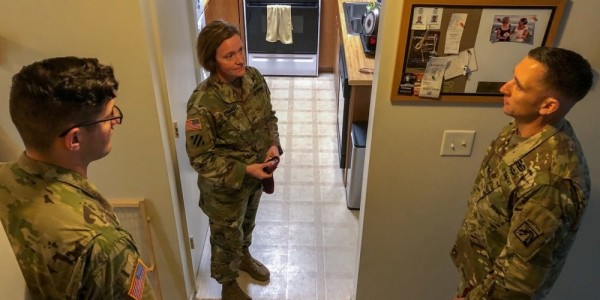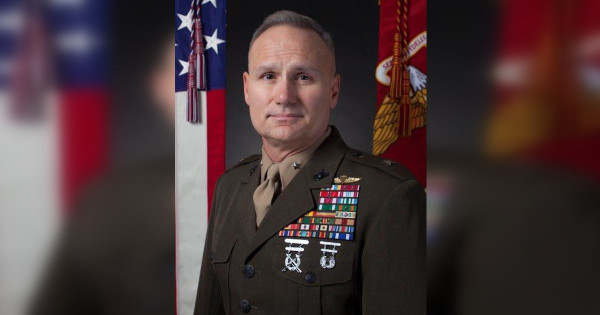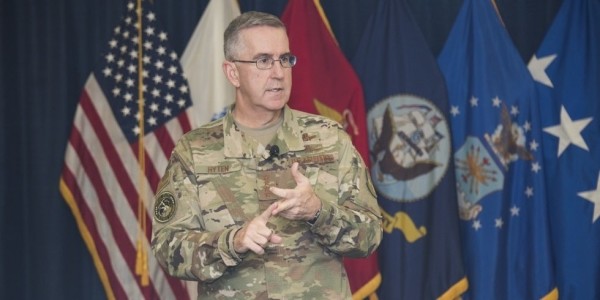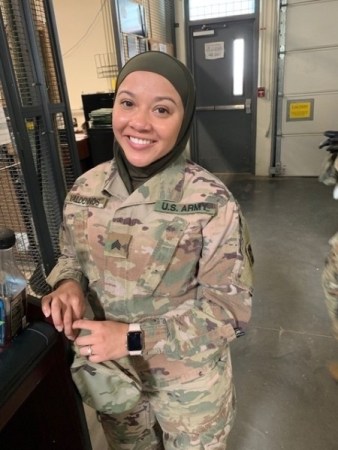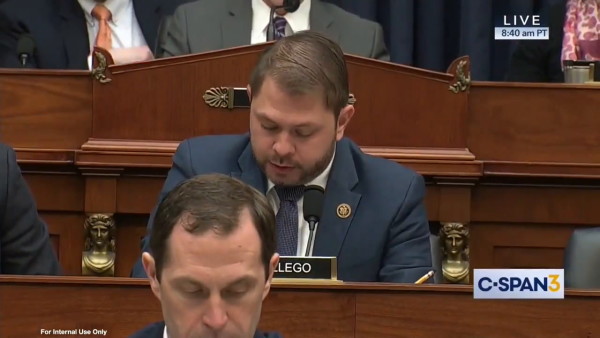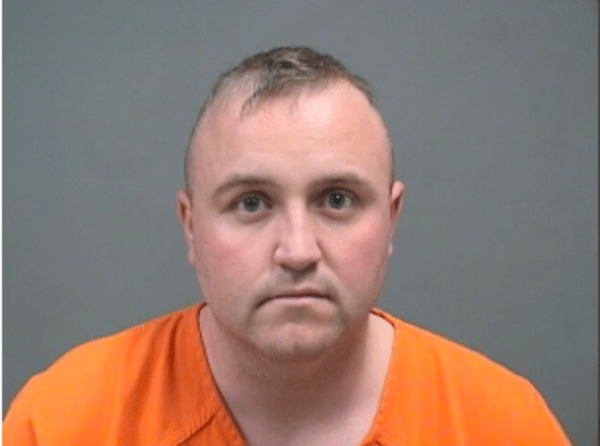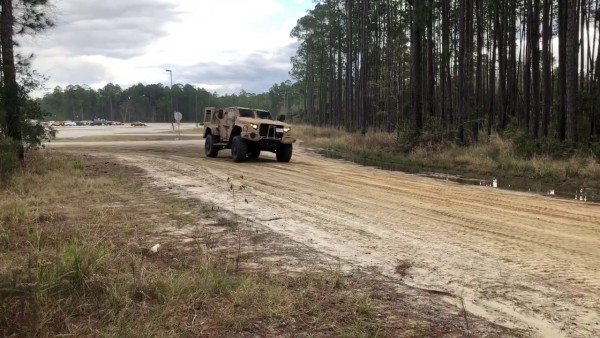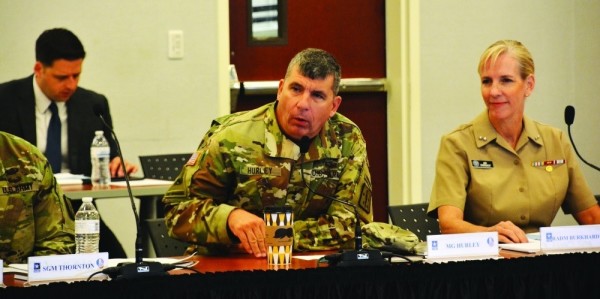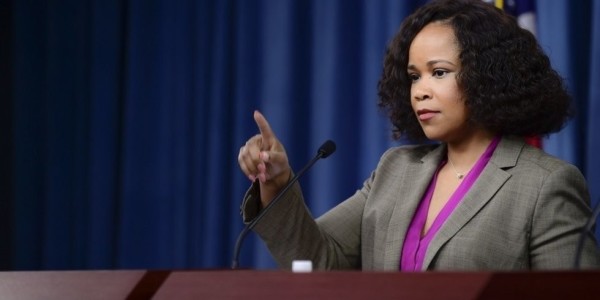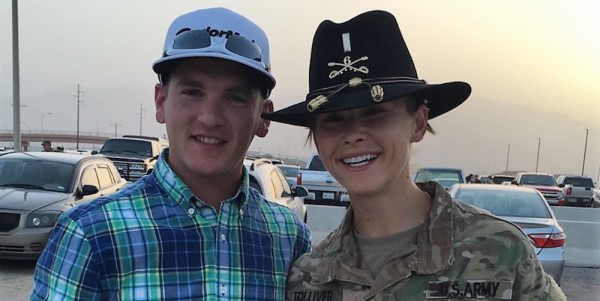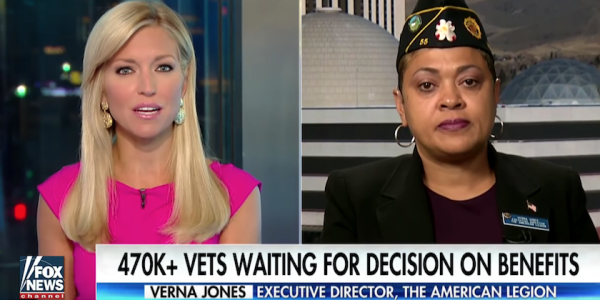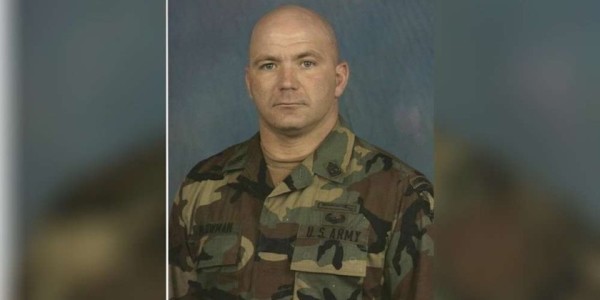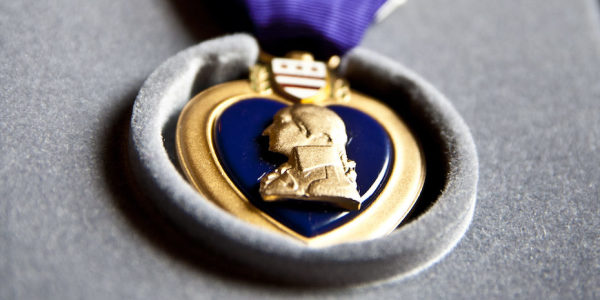Brig. Gen. Amy Johnston was about two years into her tenure as the Army’s Chief of Public Affairs when she drafted a memo for her boss, the Secretary of the Army. That spring, she informed him that every single soldier who worked for her and participated in a command climate survey — and almost every single civilian — believed her office was a hostile workplace.
Johnston, the first career public affairs officer to hold the Army’s top public relations job, took command of the Office of the Chief of Public Affairs (OCPA) in April 2019. Just a year prior, the general officer presiding over her promotion ceremony in September 2018 praised her as an officer with “a great reputation whose talents were often sought after by the Army’s senior leadership” and someone who “always took the hard jobs and performed well at each echelon” throughout her career.
But the memo Johnston delivered to then-Acting Army Secretary John Whitley told a far different version of her leadership style: the work environment in OCPA was revealed to be overwhelmingly hostile and produced devastatingly low morale, according to a command climate survey conducted between March 18 and April 30.
Johnston created a “culture of fear,” and there was more than one occasion when people in the office were “in the hallways in tears” or “in the bathroom crying,” a source familiar with the matter told Task & Purpose.

The climate survey found that 97% of people surveyed thought it was a hostile work environment. Worse still were results from uniformed service members: 100% of soldiers surveyed thought it was a hostile work environment — an overwhelming response that is practically unheard of, according to multiple sources.
“I was in a unit one time where people were volunteering to go to Iraq to get away from a commander,” an Army officer told Task & Purpose. “But I don’t think you would have gotten 100%.”
The survey results are even more significant when considering who works in OCPA: primarily field grade officers and senior noncommissioned officers. In other words, the respondents of this survey were not soldiers new to the Army who had never faced pressure or worked with difficult leaders.
Seven Army sources who spoke with Task & Purpose described experiencing or witnessing verbal abuse from Johnston, who regularly screamed at subordinates. She gave guidance that wasn’t just confusing, but outright inconsistent and constantly in flux, they said, which placed subordinates in an untenable position where success seemed impossible. And while many acknowledged that Johnston was ultimately responsible for her behavior, some said the climate in OCPA was simply a result of the Army’s overall approach to public affairs. The service does not prioritize it, they said, which makes it increasingly difficult for OCPA to operate successfully.
The Army officers in this story spoke on the condition of anonymity in order to speak freely about what they experienced and witnessed in OCPA. They voiced frustration not only with Johnston but with senior Army leaders who were either ignorant or willfully unaware of what was happening just a few floors below them at the Pentagon.
As Stars and Stripes reported on Sept. 24, there were inspector general complaints filed against Johnston that “mirrored” issues raised in the command climate survey earlier this year.

Cynthia Smith, an Army spokeswoman, said in a statement to Task & Purpose that the Inspector General is currently investigating allegations made against Johnson.
“Army leaders are always concerned about the welfare of soldiers and [Department of the Army] civilians and take seriously all allegations made against Army senior officers,” Smith said. “Brig. Gen. Johnston has been suspended from her position as the Chief of Public Affairs, pending final completion of the investigation. The Army intends to allow the Inspector General investigation to proceed independently, by not commenting publicly on the specifics of the investigation or any potential future action that may be taken as a result of the investigation.”
If there ever was a good time for a survey like that to come out, it certainly wasn’t now. For the last two years, Army leaders have been shifting their priorities to put their people before all else. People before modernization. People before readiness. People first. It seems like a straightforward change that comes alongside a simple message to the force, one which essentially boils down to: take care of and look out for one another.
But a message is only as good as the messenger, and the Army’s promise to place soldiers first appears to have been undermined by the fact that the officer in charge of relaying that guidance repeatedly failed to heed it.
“We are the organization that is charged with communicating how we’re trying to make a climate in the military that is people first, because you can’t do the mission without the people,” one public affairs officer in OCPA said. “And if the people aren’t treated [fairly] enough to do the mission, then they’re not going to want to do the mission.
“And you’re going to fail.”

‘A Dr. Jekyl-and-Mr. Hyde type thing’
A commander getting the pulse of their staff with a climate survey isn’t anything particularly unusual. Command climate surveys are a tool for commanders to find out what’s working in their unit and what isn’t, what problems their teams are experiencing and what may need to be looked into further.
The survey of OCPA found plenty to be concerned about.
In addition to only 8% of people reporting high morale, 73% of respondents in the office experienced high or moderate stress. Only 14% of those in OCPA said “they are being treated fairly,” according to Johnston’s memo, with 56% saying the opposite. Only 2% of uniformed service members in OCPA reported fair treatment.
Johnston said in her memo to Whitley that while “the assessment was not specifically about me, many of the [write-in] comments were directed towards my leadership style and mannerisms.” She also said that OCPA would put together a team to “identify the proximate cause of workplace hostility,” and specifically look for indicators “of cultural sarcasm, intentional interference with performance of duties, gossip, insults, and yelling.”
She didn’t need to look far.

Johnston regularly belittled subordinates and gave unclear guidance, making it impossible for others in the office to know what she wanted, a source said. She was “never satisfied” and interactions between Johnston and her staff would occasionally end with the brigadier general “screaming to the point of hysteria,” added a second public affairs officer. Another officer said Johnston gave such conflicting information, they began “writing things down verbatim that she said, because I knew when I’d go see her again, she’d say ‘That’s not what I said, you totally don’t understand what I told you.’”
There was a “consistent problem with inconsistency,” a fourth officer said. “I almost equated it to a Dr. Jekyl-and-Mr. Hyde type thing.”
One public affairs officer who works in OCPA, Tiffany, said Johnston’s way of responding to stress was lashing out at those around her instead of working to find a solution.
Tiffany, who spoke on condition of anonymity in order to speak freely and is being identified with a pseudonym, said she was working seven-day weeks several months into the novel coronavirus (COVID-19) pandemic when the stress of the workload and the treatment she was receiving from Johnston got so bad, she went to her boss and said she felt like she was getting sick because of exhaustion and burnout.
“[I was] literally begging, please get me some time off, and they couldn’t because we didn’t have the staff,” Tiffany said.

Another Army source said OCPA is understaffed because the Army does not prioritize public affairs. Despite paying “lip service to the importance of communication,” the source said, the service “has not put their money where their mouth is with regard to manning in particular.”
Tiffany’s burnout eventually manifested into stress migraines and dizziness, she said, even resulting in her visiting the emergency room and being told she was “essentially just exhausted.”
“I was like ‘Yeah, I could have told you that,’” she recalled to Task & Purpose. She went back to work the next day.
Tiffany hit her breaking point on a Friday in the spring of 2020. She’d finally gotten a day off, but still needed to come into the Pentagon that day. Immediately after arriving she was roped into a meeting on a scheduled “60 Minutes” interview with the Army Secretary, which Johnston demanded Tiffany brief her on, despite the interview not being in Tiffany’s lane of responsibility. They got on a call — Tiffany from the office, and Johnston from her car. Johnston was yelling at such a level, Tiffany said, that it seemed like she was white-knuckling the steering wheel.
The general was screaming and demanding to hear Tiffany’s plan, but when Tiffany gave her one, Johnston yelled back that it wasn’t what she wanted. “I’m not asking you, I am ordering you,” the officer recalled Johnston telling her, “You are going to stay here all weekend until I have a plan on my desk on Monday morning, do you understand me?’”

After the call, Tiffany broke down. In tears and feeling “floored,” she recalled having an anxiety attack and thinking, “I can’t do this anymore. I can’t. I’m breaking.”
“I’ve been to fucking war, okay?” the officer said. “I have been through way worse than this, but this woman constantly beat me down … She essentially made me feel like I’m worthless.”
Before she came to OCPA in 2018, Tiffany had been going to therapy to help address post-traumatic stress disorder. She’d finally gotten to a point where she was “okay,” she said, but the treatment from Johnston “broke” her.
“I was like, I don’t know what to do. I can’t handle this anymore,” she cried. “Nothing I do is right. Everything I do is wrong. She gives guidance one way and then turns around and tells you that’s not what she said … And all along I’m trying to keep it together, because it’s a professionalism thing. I don’t want to be seen as weak.”
‘Always spinning in reactive mode’
Johnston’s suspension was not the only time Army public affairs has faced criticism.

The Army struggles with transparency and with being proactive with public relations, as Task & Purpose reported in June, which often leaves them to play catch-up with the news of the day. Several public affairs officers pointed to a reluctance from Army commanders to accept the importance of communicating with the public — something that was put on full display during Spc. Vanessa Guillén’s disappearance from Fort Hood, Texas.
A report of the investigation of Guillén’s disappearance released by the Army in May revealed a total breakdown in communications with both the public and the Guillén family. The Army didn’t prioritize transparency throughout the search for Guillén, the report said, and the ineffective communication made Army leaders appear “insincere.” That sentiment was echoed by Guillén’s family and their attorney; her sister, Lupe, said at a press conference in July 2020 that the Army “lied to our faces, every single day.” The family’s attorney, Natalie Khawam, called Fort Hood leaders “evasive.”
While it remains unclear how much fault OCPA carries for Fort Hood’s failings, Johnston herself was named in the report: Maj. Gen. Scott Efflandt, the acting senior commander of Fort Hood at the time, told investigators he got “different advice” from Johnston than he got from Michael Brady, the deputy chief of public affairs.

But Johnston was largely absent from meetings during that time — and really, much of 2020, which brought challenge after challenge for Army public affairs, according to one Army staff member who previously served at the Pentagon. The COVID-19 pandemic made public affairs even more difficult with virtual meetings and press events, not to mention the crisis of Guillén’s death and the service’s reluctance to speak about the investigation, which fueled further media coverage. Then the murder of George Floyd in May pushed the Army to address racism and extremism in the ranks.
“When COVID started getting bad, we never saw her at any press conferences, then we had Vanessa Guillén then we had George Floyd,” said the staff member. “It’s like she was never around … someone would be like where is [Johnston]? Amy [Johnston]? Where’s Amy? That was like a running joke: Where is Amy? She was never there.”
While there were no doubt problems with Johnston’s leadership, sources say issues inside OCPA have existed for years and are the direct result of a service that doesn’t see public affairs as a priority. An Army public affairs officer who served a brief tour at OCPA said what has been revealed in the office is frustrating and embarrassing for PAOs around the Army, but it’s ultimately just one more indicator that Army public affairs is broken.

The officer said that when he got to OCPA for his temporary stint in the office, he was excited. He believed it would be the “gold standard of military communication,” he said, calling it “where the varsity plays.”
What he found was the exact opposite.
Instead, the office seemed to always be “in reactive mode,” though it was never clear exactly why. But the officer believed it was indicative of a deeper problem. If the Office of the Chief of Public Affairs, which reports directly to the top official in the Army is “always spinning in reactive mode, there’s got to be something about how this organization views them and allocates them.”
Tiffany, the public affairs officer in OCPA, said that despite challenges she faced working with the general, she recognized that ultimately Johnston “may not have had the support she needed.” There’s “no excuse for a toxic environment,” the officer said, but she added that Johnston was under intense pressure as the top officer in a field that, in the Army at least, is often treated as a “break glass in case of emergency” solution.
Other sources echoed that view. Army leadership often puts public affairs “on the back burner,” one officer said. Another said OCPA ran into problems with Army leaders elsewhere in the Pentagon because of Johnston’s rank; as a one-star general, she is often outranked by those her staff were working to get information from.
“You put a one-star in charge of public affairs, and you’re expecting them to corral two-, three-, and four-stars who won’t listen to her?” one officer said. “Do you think that’s really fair?”

That’s to say nothing of her staff, who unlike their boss, did not have a star on their collars. Another public affairs officer with experience working in OCPA said things couldn’t get done on time because it was a constant struggle to get information from the other Army offices in the Pentagon. It created an environment where Johnston could request something, and the PAO assigned to work the issue would be “fighting an uphill battle going to three-star staff” asking for information that the staff refused to share.
“Then [Johnston] comes back and follows up, and is like, ‘What the hell have you been doing all day?’ It’s like well, ma’am, today I’ve been trying to win over the hearts and minds of these staff sections who don’t believe they have to answer to us. Why? Because my boss is only a one-star,” the public affairs officer explained. “You can’t say that to your boss too many times before they start snapping, even though it’s the truth. I think that created an environment where there’s all this pressure to succeed, but not the resources to do so.”
Still, other sources pushed back on the idea that OCPA was working under untenable conditions. One officer said claims that OCPA was overworked and under-resourced didn’t match up with what was coming from the office.
“Given that that office never engaged with the media, took multiple days to staff simple media queries, and rarely offered guidance to the field, that idea rings hollow. In fact, for the past 18 months or so, it’s never been clear what the Chief of [Public Affairs] office actually did,” the officer said.

The idea that Johnston was a “victim of circumstance is completely untrue,” said another officer. Public affairs officers throughout the Army were ecstatic to have a career PAO in the Chief of Public Affairs seat, the source said, and were ready to do the work.
“She had more people bending over backwards, working as hard as they [could] to set her up for success, until they started being treated the way she treated folks,” the source said. “And I think — I hope — that is why the investigations … are at the point that they are. This was not just the end result of too much work, too few people.
“Everybody was willing to work extra hours and extra hard, and they were excited that a public affairs officer was getting this opportunity,” the source added. “And she abused all of those people.”
‘How can you sell the Army’s ‘People First’ initiative while … 97% of your people report workplace hostility?’

The culture exposed at the Army’s top public affairs office leaves lingering questions about what the Army has been relentlessly messaging over the last two years: That leaders should put the welfare of their service members first.
The “This is My Squad” campaign was borne from that thinking. It encourages soldiers to look out for and care for one another and creates an environment in which soldiers trust their leaders and vice versa.
But the recent revelations about the work environment at the office tasked with championing that message cast doubt on how seriously the Army actually takes it.
“How can you sell the Army’s ‘People First’ initiative while making a work environment in which 97% of your people report workplace hostility?” the PAO who served a brief tour at OCPA said. “You can’t.”
Tiffany said Johnston broke her faith in senior Army leaders. It’s difficult to trust that they “are going to do what’s right,” because other Army leaders at the Pentagon knew about the situation with Johnston “for quite a long time” and did “nothing about it.”
The reluctance to take action against Johnston sooner is “the antithesis of ‘People First,’” one source said, adding that others in Army leadership recognized that as the Army’s top spokesperson, “it would be embarrassing that she was one of those toxic leaders.”
“There was a hopelessness that she would be dealt with appropriately,” the officer said, adding that leaders wanted to avoid a public firing.
Still, Tiffany said things have improved over the last few months, both for her personally and in the office. And she believes the next steps seem relatively straightforward: the service needs to have a conversation about leadership, she said, and how Army leaders are trained and equipped to live out the People First mentality.
“If you’re a leader, and you’re not taking care of your soldiers, you’re wrong,” the officer said. “Listen to them. Listen to what they’re saying. Don’t think that they’re whining or that they’re weak. Be a mentor and an advocate for them. …If we want the Army to know that this is my squad, and people are first, then act like it.”
More great stories on Task & Purpose
- ‘The Army has a transparency problem’ — Inside the Army’s failure to communicate
- It’s been one year since Vanessa Guillén’s disappearance. Has the Army changed at all since then?
- ‘It’s going to take time’ — Top Army leaders are playing the long game with putting people first
- ‘This can’t be my Army’ — The Fort Hood report is a long-overdue wake-up call for Army leaders
Want to write for Task & Purpose? Learn more here and be sure to check out more great stories on our homepage.



